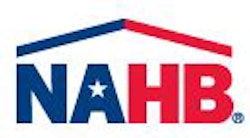
Markets in 58 out of the approximately 350 metro areas nationwide returned to or exceeded their last normal levels of economic and housing activity, according to the National Association of Home Builders/First American Leading Markets Index (LMI). This represents a net gain of two from the previous month. The index’s nationwide score ticked up a percentage point to .87. This means that based on current permits, prices and employment data, the nationwide average is running at 87 percent of normal economic and housing activity.
“Housing markets across the nation are continuing their slow and steady climb back to normal levels,” said NAHB Chairman Rick Judson, a home builder from Charlotte, N.C. “As employment and consumer confidence slowly improves, this is spurring pent-up demand among potential buyers.”
“Firming home prices are hastening the return of normal economic and housing activity in an increasing number of markets,” said NAHB Chief Economist David Crowe. “The healthiest markets continue to be centered in smaller metros that boast strong local economies, particularly in the oil and gas producing states of Texas, North Dakota, Louisiana and Wyoming.”
“We are pleased about the continued market trends, highlighted by the fact that 85 percent of all metropolitan areas have shown signs of improvement over the past year,” said Kurt Pfotenhauer, vice chairman of First American Title Insurance Co.
Baton Rouge, La., tops the list of major metros on the LMI, with a score of 1.41 – or 41 percent better than its last normal market level. Other major metros at the top of the list include Honolulu, Oklahoma City, Austin and Houston as well as Harrisburg, Pa. and Pittsburgh – all of whose LMI scores indicate that their market activity now exceeds previous norms.
Looking at smaller metros, both Odessa and Midland, Texas, boast LMI scores of 2.0 or better, meaning that their markets are now at double their strength prior to the recession. Also at the top of the list of smaller metros are Bismarck, N.D.; Casper, Wyo.; and Grand Forks, N.D., respectively.
The LMI shifts the focus from identifying markets that have recently begun to recover, which was the aim of a previous gauge known as the Improving Markets Index, to identifying those areas that are now approaching and exceeding their previous normal levels of economic and housing activity. More than 350 metro areas are scored by taking their average permit, price and employment levels for the past 12 months and dividing each by their annual average over the last period of normal growth. For single-family permits and home prices, 2000-2003 is used as the last normal period, and for employment, 2007 is the base comparison. The three components are then averaged to provide an overall score for each market; a national score is calculated based on national measures of the three metrics. An index value above one indicates that a market has advanced beyond its previous normal level of economic activity.



























